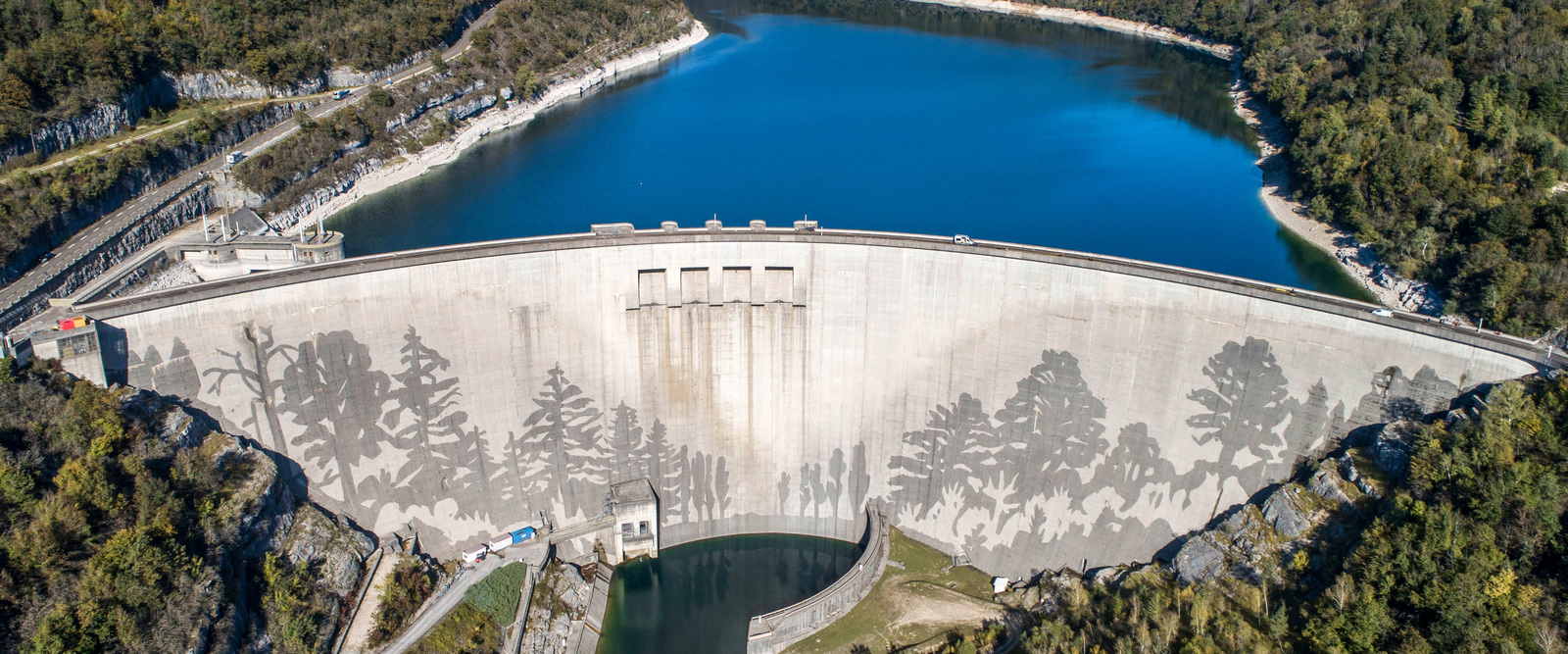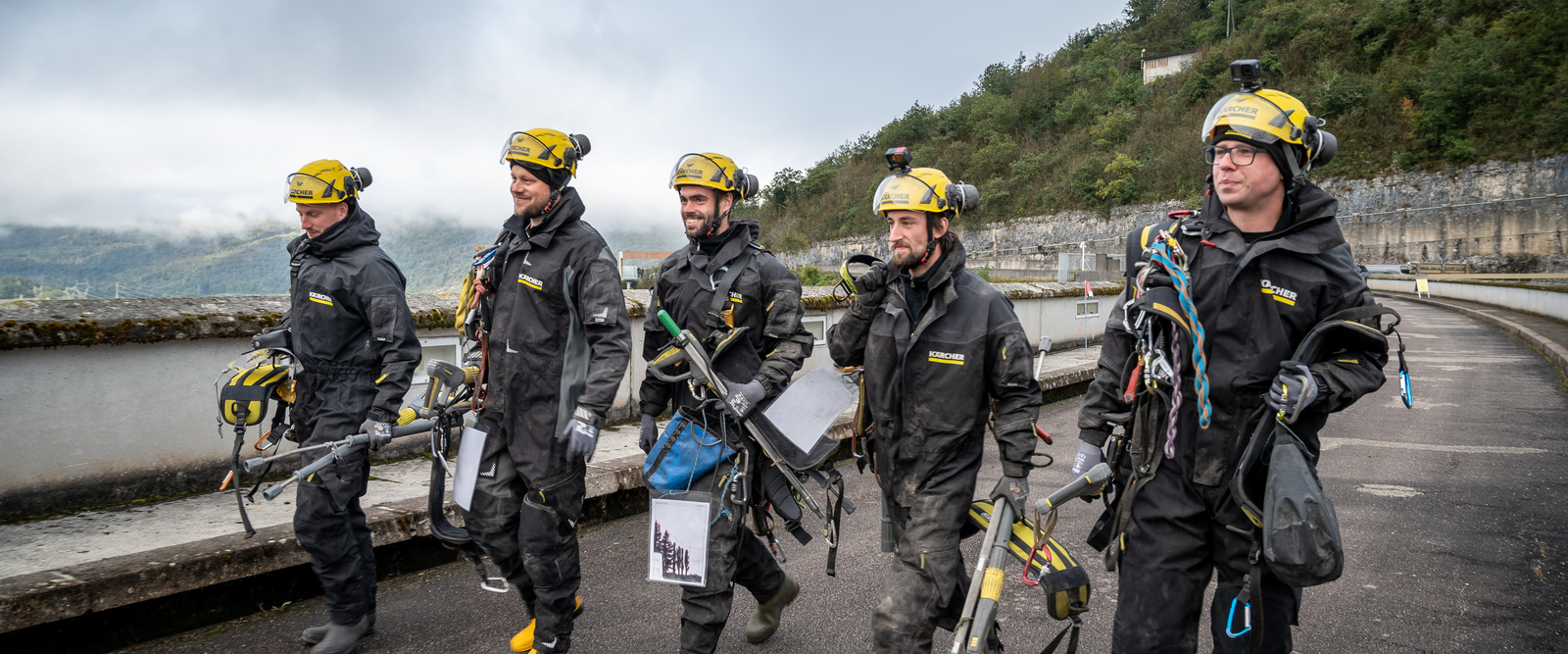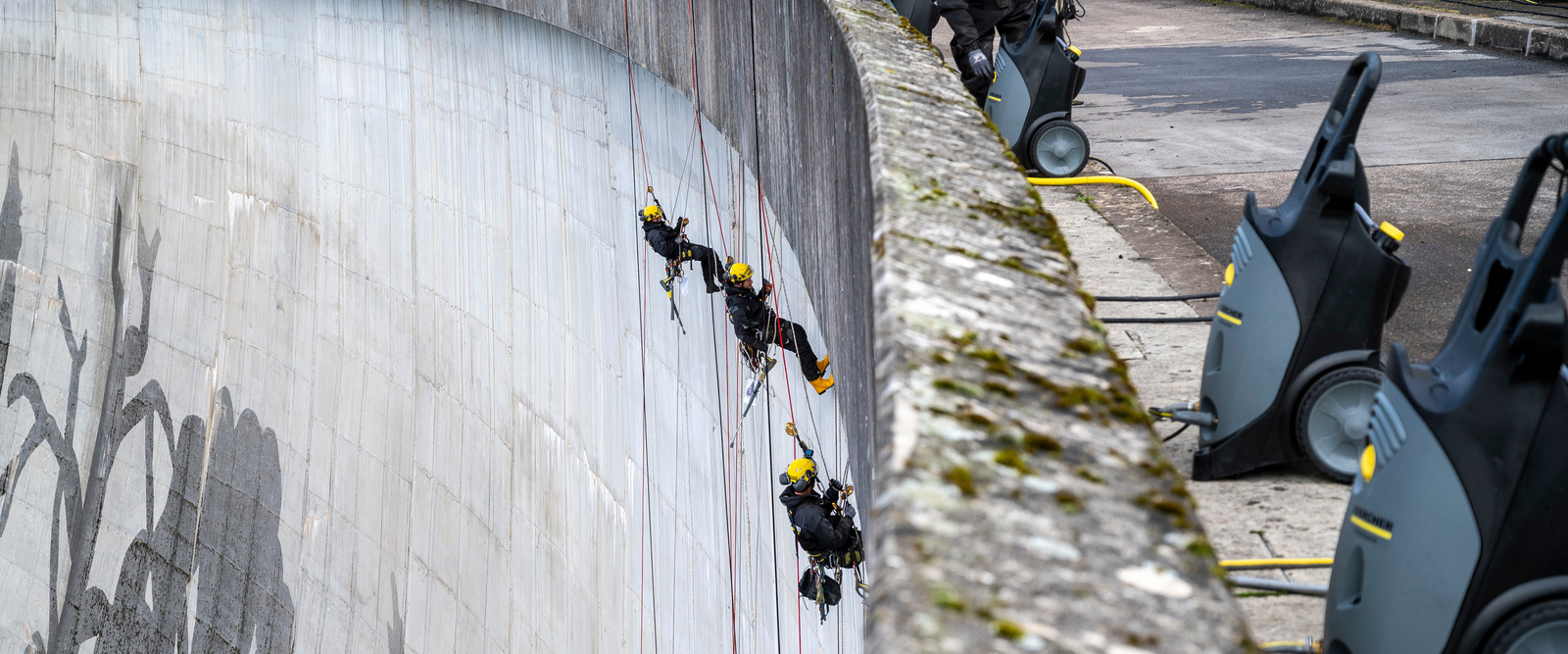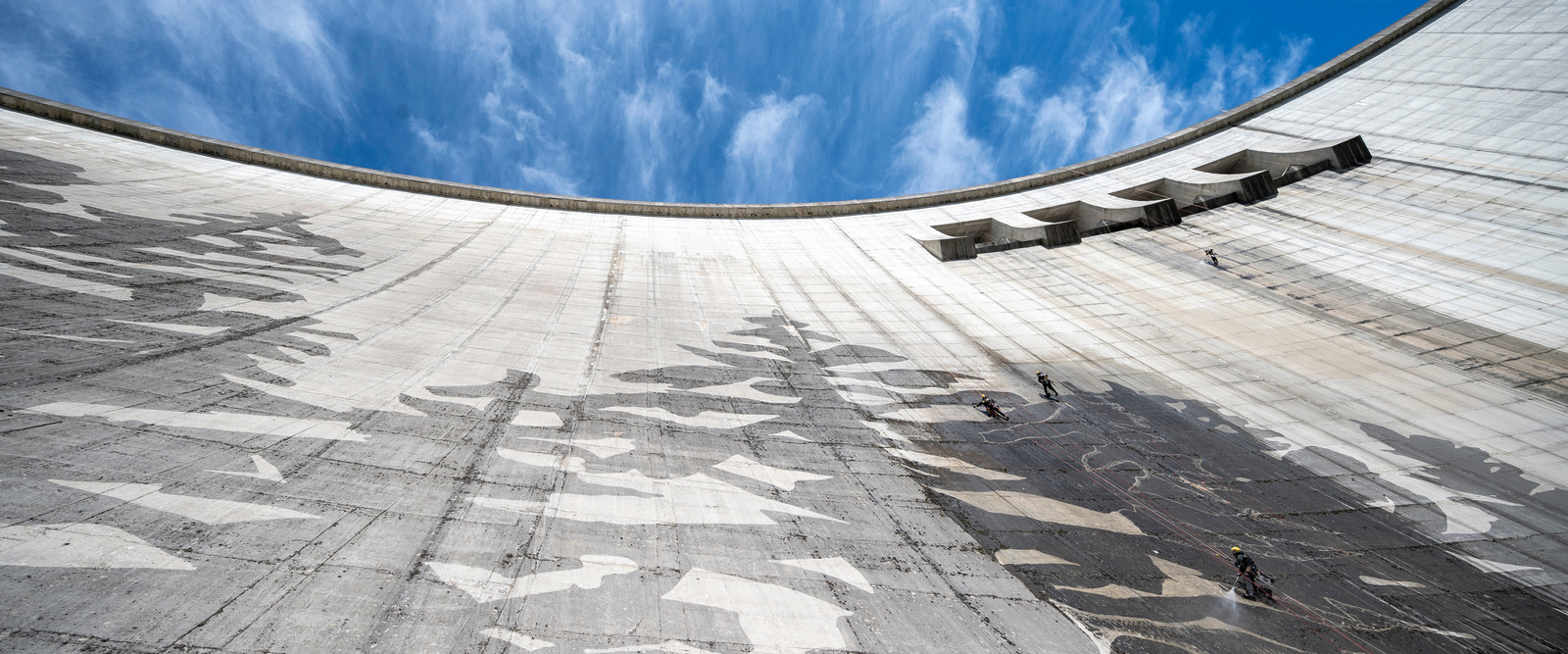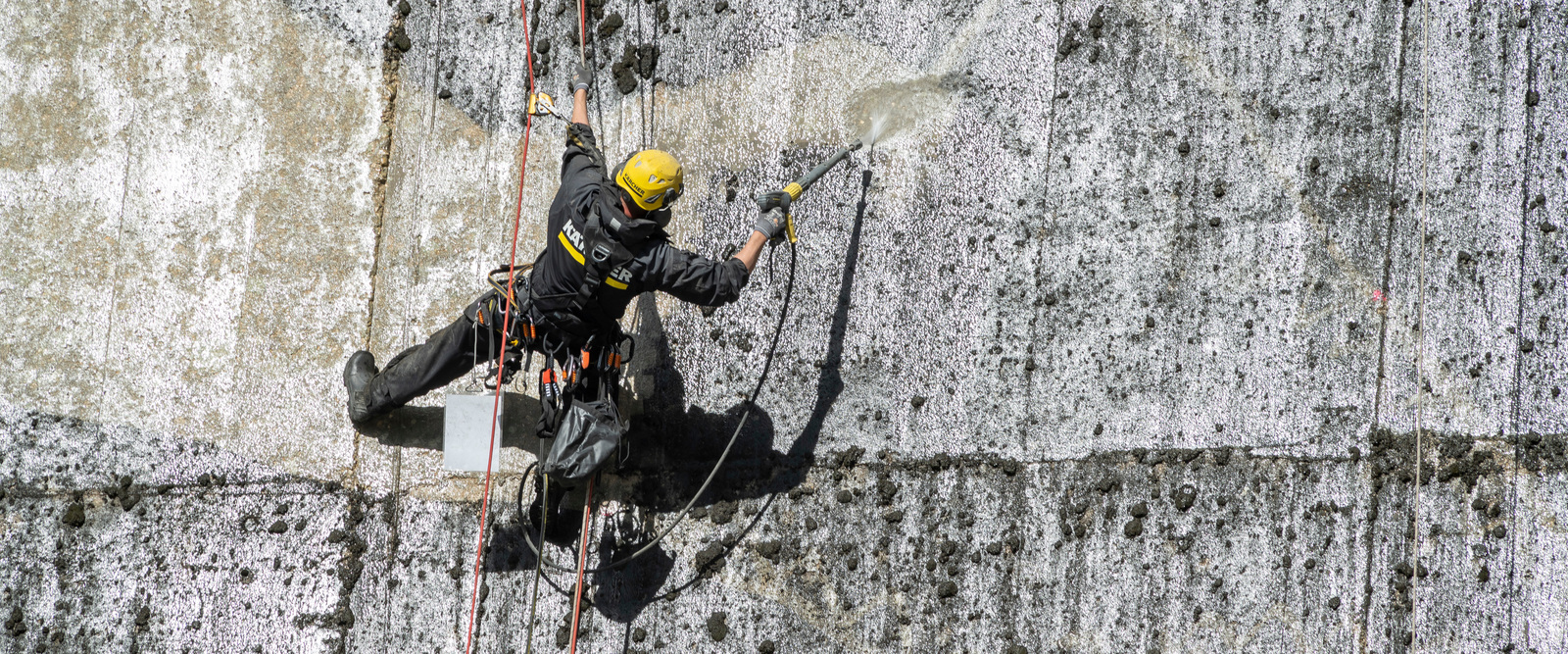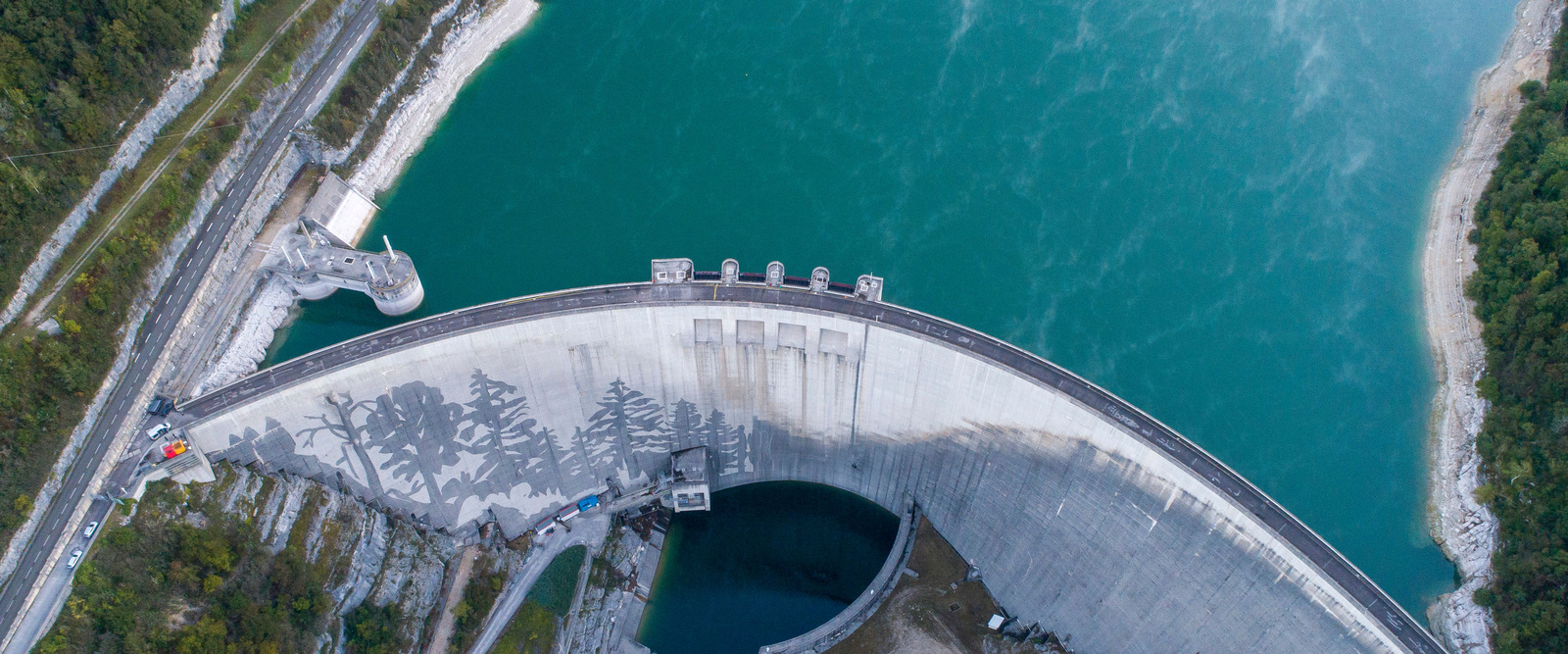Drawing of superlatives
On a dam wall in the French Jura, the artist Klaus Dauven has created a large-scale drawing together with Kärcher and the energy company EDF (Électricité de France). A so-called reverse graffiti has been created on the 110 by 430 metre surface of the Vouglans dam. In this art form, a drawing is created from the contrast between cleaned and uncleaned surfaces, i.e. through the targeted removal of dirt. The motif: the silhouette of a forest landscape.
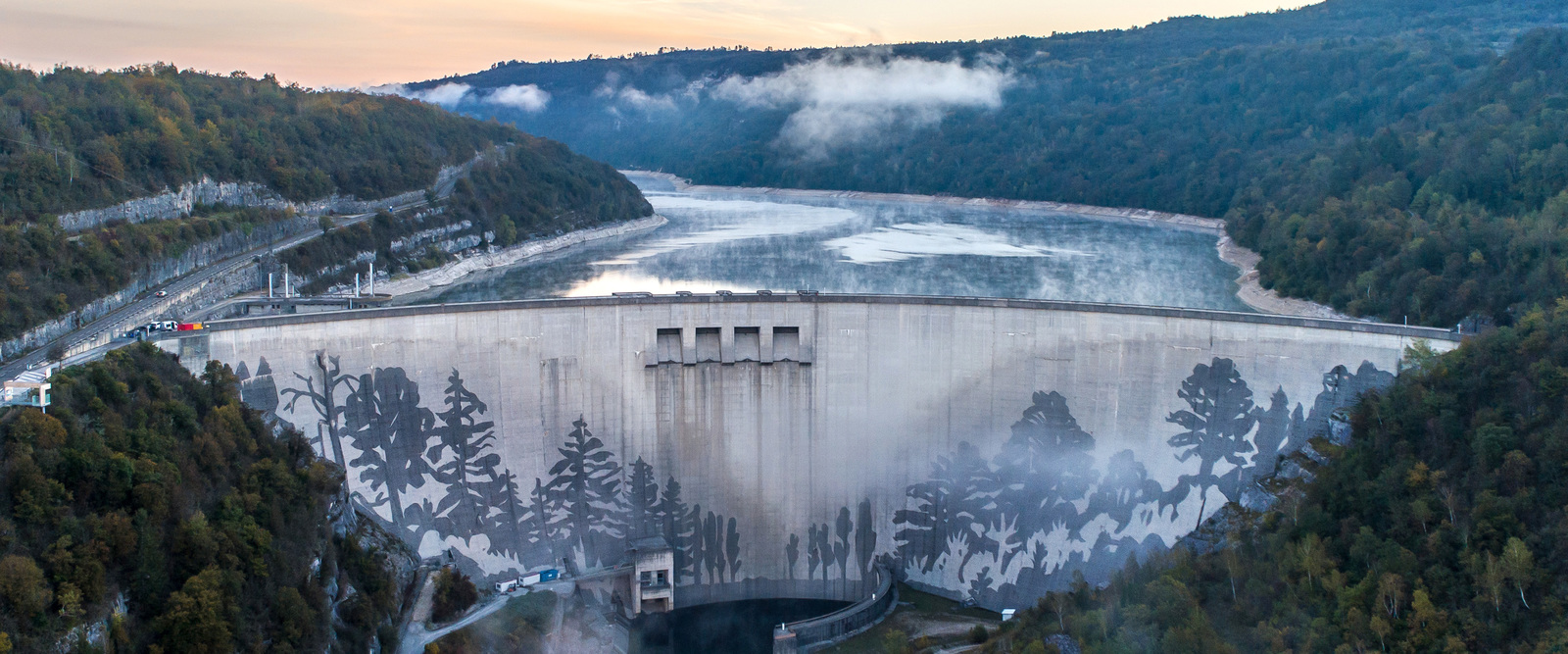
How the artwork came into being
The artwork on the Vouglans dam is already the fifth joint project by Klaus Dauven and Kärcher, and at the same time it is also the largest reverse graffiti to date.
To put the drawing on the dam, industrial climbers abseiled down from the crown and applied more than 2,500 adhesive dots made of a biological plasticine to the polluted surface. They were assisted by surveyors who used laser technology to mark the appropriate spots on the wall from the ground. Once all the adhesive dots had been applied, the climbers used high-pressure cleaners to work out the motif from the dirt, consisting of moss, lichen and fungal growth, according to the "paint by numbers" principle. During the work, special emphasis was placed on a sustainable approach: The water for the high-pressure cleaners was taken directly from the reservoir and the electricity came from the dam's hydroelectric power plant. In addition, no cleaning agents of any kind were used. The drawing took a total of four weeks to complete. Four cold-water high-pressure cleaners, six industrial climbers, several Kärcher employees and the artist himself were deployed.
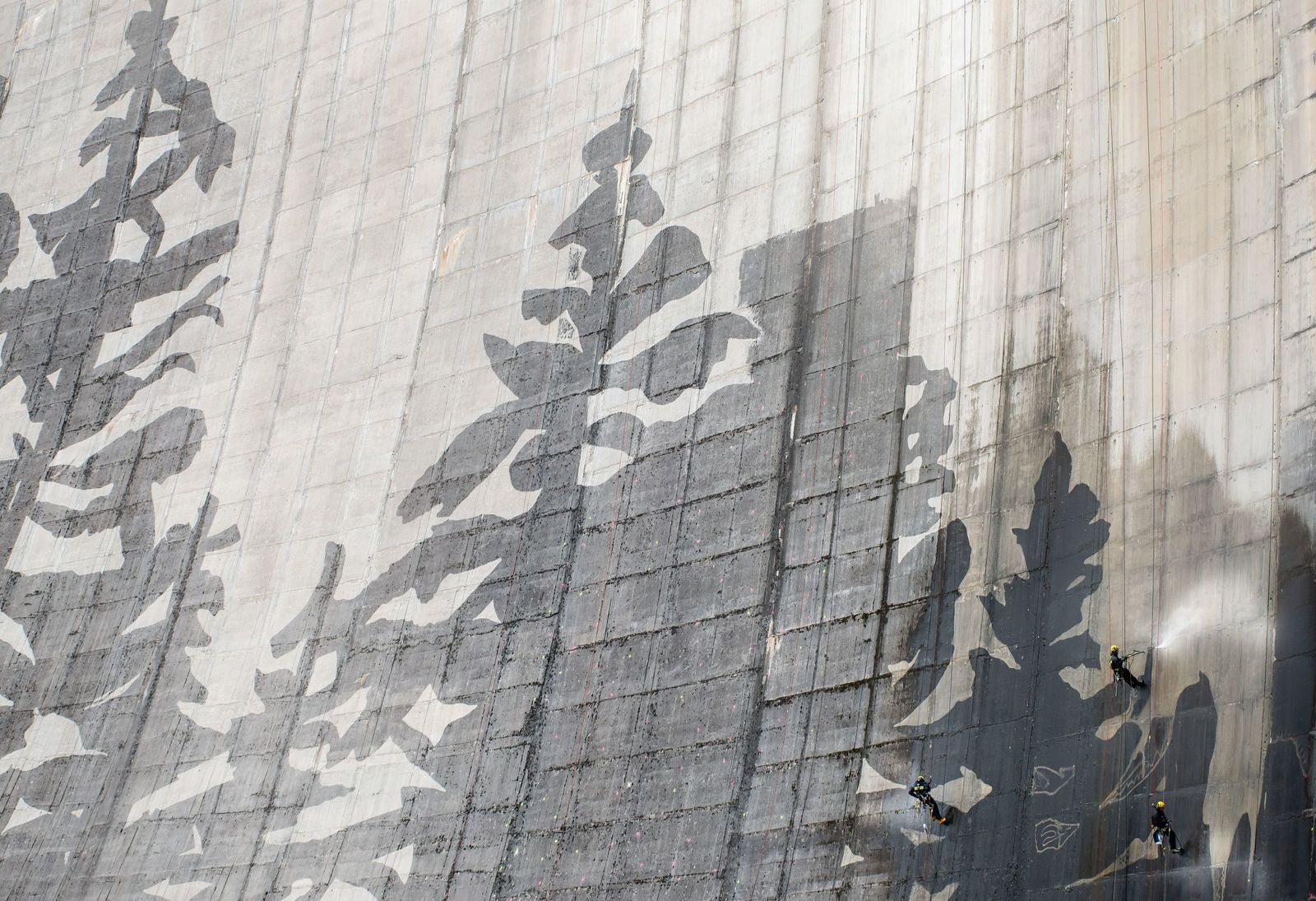
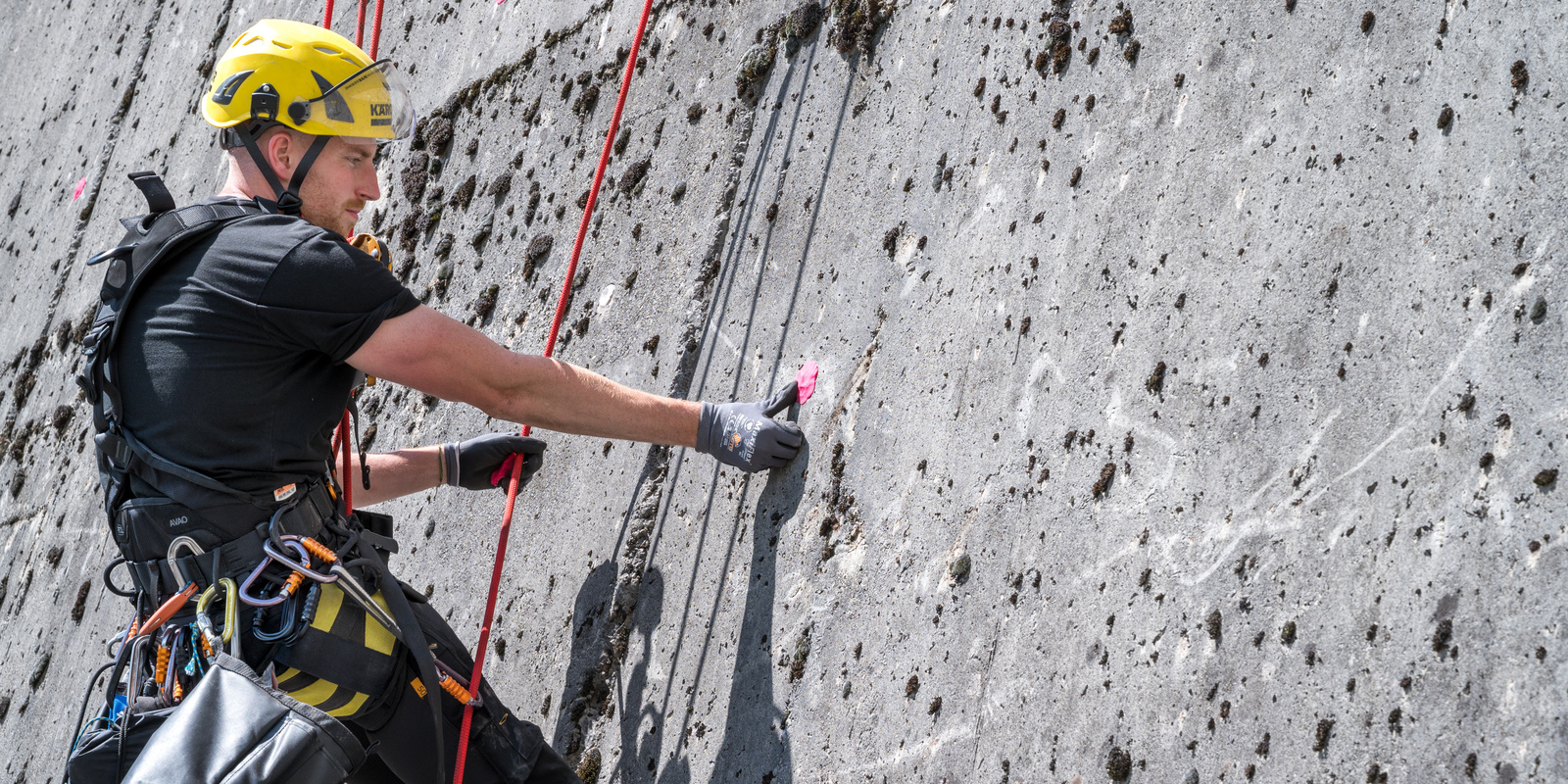
To put the drawing on the dam, industrial climbers rappelled down from the crown and applied more than 2,500 dots of adhesive made from a biological modeling clay to the polluted surface.
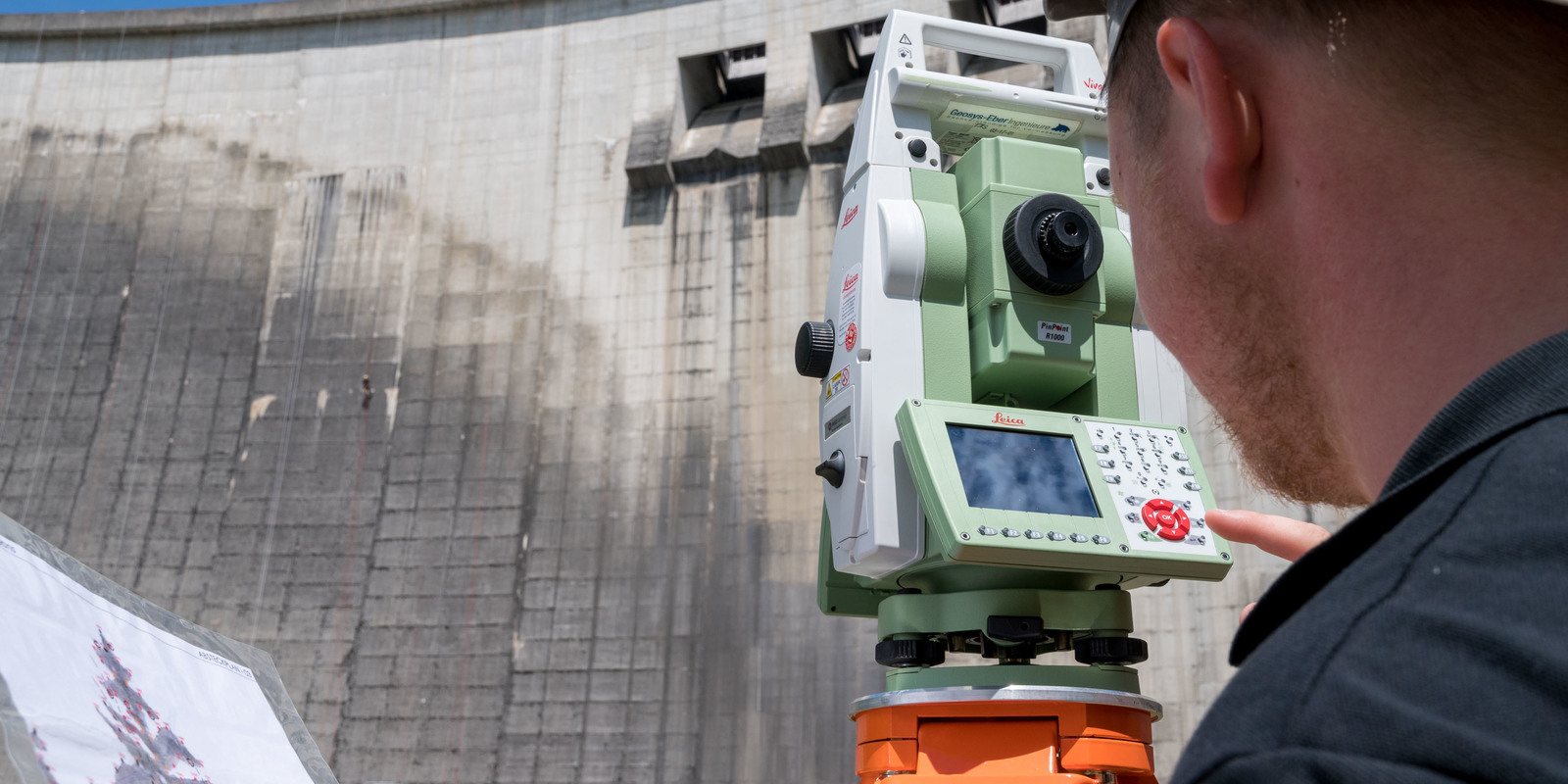
They were assisted by surveyors who marked the appropriate locations on the wall from the ground using laser technology.
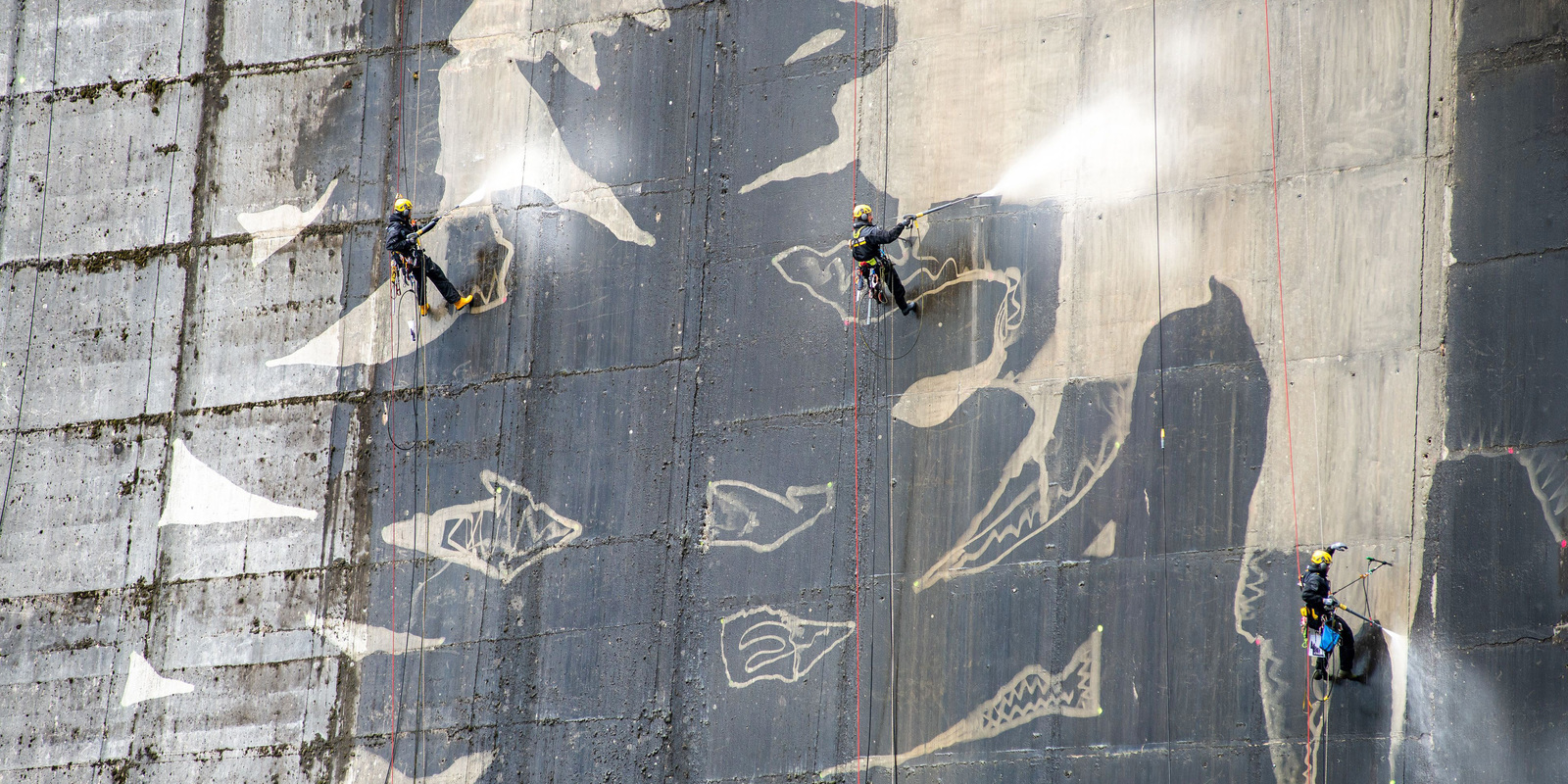
Once all the adhesive dots had been applied, the climbers rappelled down again and used high-pressure cleaners to work the motif out of the dirt, consisting of moss, lichen and fungal growth, according to the "paint by numbers" principle.
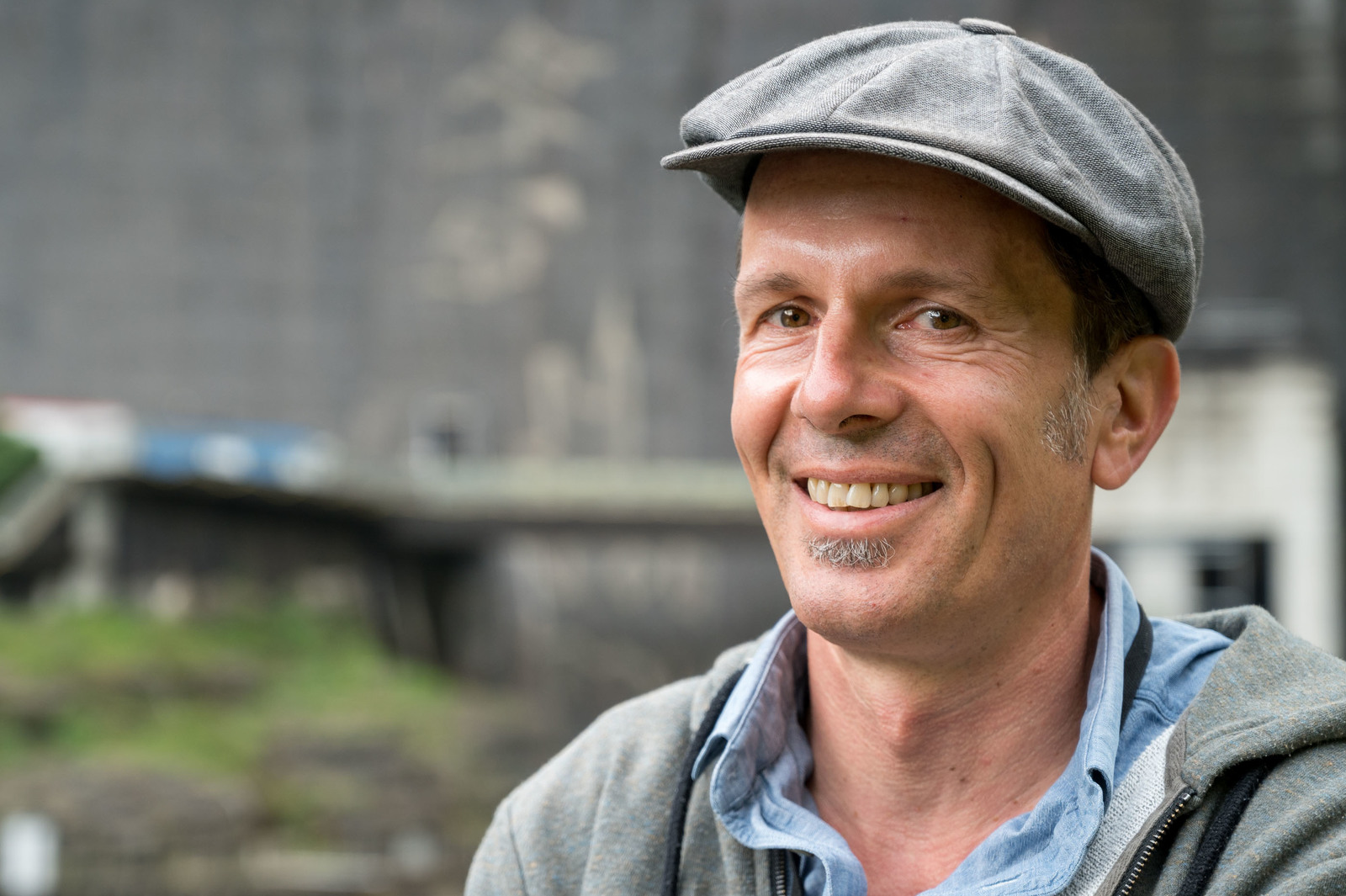
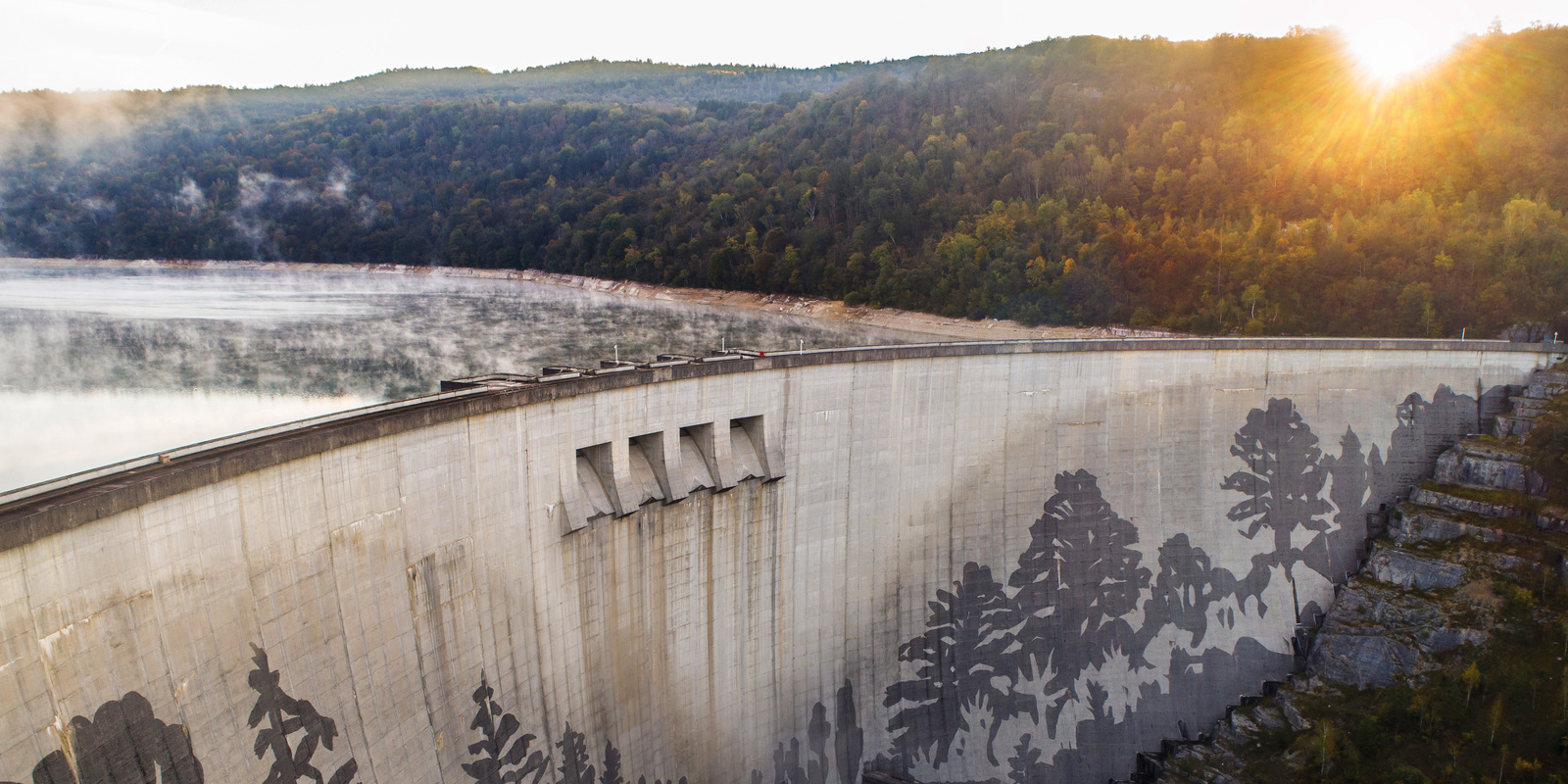
The dam in the morning mood.
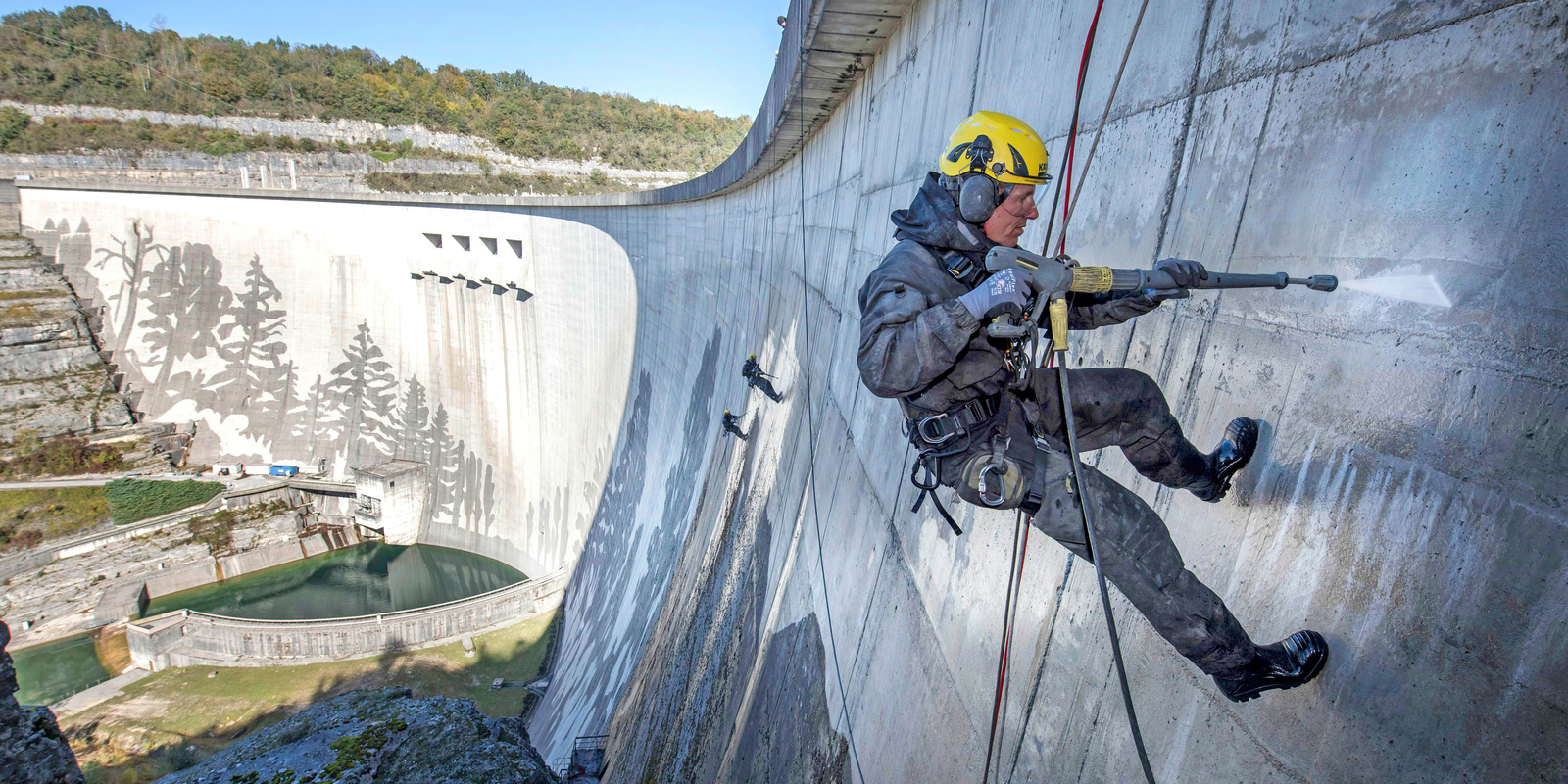
To put the drawing on the dam, the team roped down from the crown - here in the foreground, the artist can be seen in action.

All facts at a glance
Country: France
Place: Vouglans
Type of soiling: Moss, lichens, fungi, bacteria
Cleaning technology: cold water high pressure cleaner
Execution: September - October 2021

